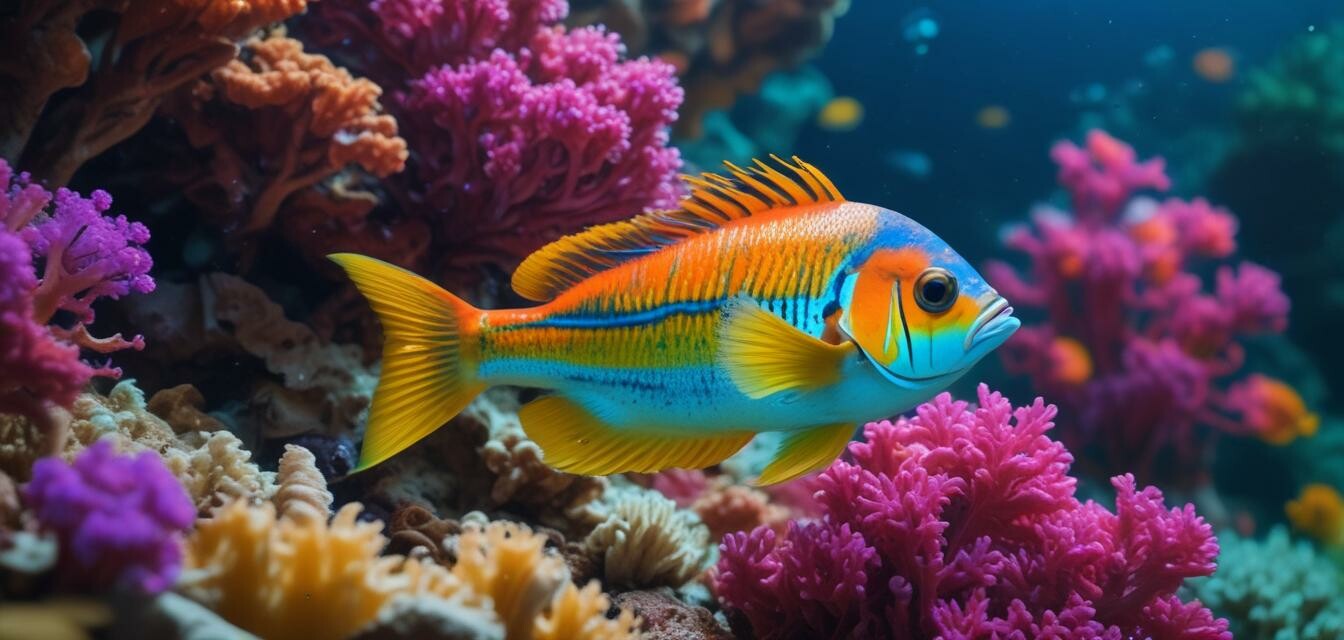
Using your flash effectively in underwater photography
Key takeaways
- Using flash can significantly enhance underwater photographs.
- Proper placement of the flash reduces shadows and highlights colors.
- Experimenting with different settings can yield unique effects.
- Utilizing filters with flash can improve color balance.
Underwater photography presents unique challenges, particularly due to poor lighting conditions. Many photographers fail to capture the vibrant colors and details of their subjects because they either rely on natural light or do not use their flash effectively. In this guide, we will explore how to use underwater flashes to enhance your photos and eliminate shadows in challenging conditions. Let's dive in!
Why use flash in underwater photography?
Using flash underwater can drastically improve the quality of your images. Here are some reasons to consider integrating flash into your underwater photography toolkit:
- Color enhancement: Colors appear more vibrant when illuminated with flash, especially in deeper waters where natural light diminishes.
- Shadow reduction: Flash can eliminate unwanted shadows that often result from natural light, helping to create even lighting across your subject.
- Detail visibility: A well-placed flash can reveal intricate details and textures that might otherwise be lost in low light.
Understanding the challenges of underwater lighting
The aquatic environment poses specific challenges, which include:
- Loss of color: The deeper you go, the more colors are absorbed – reds and oranges are lost quickly, contributing to a blue or green tint to your images.
- Limited visibility: Water clarity can affect how light travels, making it essential to use flash to illuminate your subject effectively.
- Backscatter: Particles in the water can reflect light and create unwanted spots in your images, which is a common issue in underwater photography.
Types of flashes for underwater photography
When selecting a flash for underwater photography, it's important to understand the different types available:
| Type | Description | Pros | Cons |
|---|---|---|---|
| Strobe | Powerful flash designed specifically for underwater use. | High power, adjustable settings, wide coverage. | Bulkier, requires careful handling. |
| Video Light | Constant light source that provides continuous illumination. | Easy to use, great for video, good color rendition. | Less powerful than strobes, more drain on battery. |
| Built-in Camera Flash | Flash integrated into the camera. | Convenient, no extra equipment needed. | Limited range, can produce harsh lighting. |
Best practices for using flash underwater
To maximize the effectiveness of your flash, consider the following practices:
- Adjust your flash angle: Direct the flash at a 45-degree angle to reduce backscatter and illuminate your subject evenly.
- Practice distance: Aim to position the flash close to the subject to reduce the amount of water between the flash and the subject.
- Use diffusers: Diffusers can soften the light output and help to create a more pleasing look in photographs.
- Combine flash with natural light: For dynamic shots, consider using flash alongside natural light for a balanced exposure.
Experimenting with settings
To master underwater flash photography, don't be afraid to experiment with your settings:
- Flash power: Adjust your flash's settings to avoid overexposure or underexposure of your subject.
- Shutter speed: Use faster shutter speeds to freeze motion and minimize the effects of water movement.
- Aperture: A wider aperture will allow more light to reach the sensor, helping in low-light conditions.
Using filters with your flash
Utilizing filters can enhance the quality of your underwater images. Here’s how filters can be beneficial:
- Color correction filters: Help to balance colors and compensate for the loss of warmer tones underwater.
- Polarizing filters: Reduce glare and enhance saturation, making colors more vibrant.
Overall, filters can complement the use of your flash to enhance your underwater shots.
Pros
- Improves color and clarity in underwater photos.
- Reduces shadows and enhances detail visibility.
- Allows for more creative control over image composition.
Cons
- Can create backscatter if not positioned correctly.
- Requires additional investment and equipment handling.
- Learning curve involved in setting adjustments.
Conclusion
Using flash in underwater photography can take your images from ordinary to extraordinary, enhancing colors and reducing shadows. Experiment with different techniques, settings, and equipment to discover what works best for your style. Whether you are a beginner or an experienced photographer, mastering the use of flash is essential for capturing stunning underwater images.
Further reading
For more tips and techniques, check out our articles on underwater photography techniques and explore our range of underwater lighting products.

